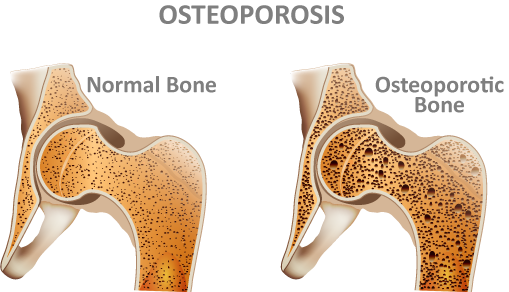Vitamin D
The Vital Role of Vitamin D in Whole-Body Wellness
Vitamin D and Kidney Disease: The Critical Link You Can’t Ignore

Understanding the Vital Connection Between Vitamin D and Kidney Health
You’ve likely heard that vitamin D comes from sunlight, fortified foods, or supplements, and that it’s essential for strong bones and a healthy immune system.
But what many people don’t realize is that your kidneys play a non-negotiable role in transforming vitamin D into its biologically active form. For the estimated 37 million Americans living with chronic kidney disease (CKD), and the additional 1 in 3 U.S. adults at risk, this process can break down, leading to serious, often overlooked health consequences.
This guide explains the science behind this connection, the risks of deficiency, and actionable steps for prevention and management, backed by current medical guidelines and peer-reviewed research.
What Is Chronic Kidney Disease (CKD)?
Chronic kidney disease is a progressive condition in which the kidneys gradually lose their ability to filter waste, excess fluids, and electrolytes from the blood. Over time, this can lead to a buildup of toxins, high blood pressure, anemia, bone disorders, and cardiovascular complications.
CKD is staged from 1 to 5, based on the glomerular filtration rate (GFR), a measure of kidney function:
- Stage 1–2: Mild kidney damage with normal or near-normal function.
- Stage 3a–3b: Moderate loss of function (GFR 30–59 mL/min). Often when complications like vitamin D deficiency begin to emerge.
- Stage 4: Severe loss of function (GFR 15–29 mL/min).
- Stage 5 (End-Stage Renal Disease – ESRD): Kidney failure requiring dialysis or transplant.
According to the Centers for Disease Control and Prevention (CDC) and the National Kidney Foundation (NKF), approximately 37 million U.S. adults have CKD, and 90% of them are unaware they have it in the early stages.

According to the Centers for Disease Control and Prevention (CDC) and the National Kidney Foundation (NKF), approximately 37 million U.S. adults have CKD, and 90% of them are unaware they have it in the early stages.
How Vitamin D Becomes “Active”, And Why Kidneys Are Essential
Vitamin D isn’t active when you get it from the sun, food, or standard supplements. It must undergo two hydroxylation steps to become usable by the body:
1. First activation (liver): Inactive vitamin D (either D₂ or D₃) is converted to 25-hydroxyvitamin D [25(OH)D], the form measured in blood tests to assess vitamin D status.
2. Second activation (kidneys): The kidneys convert 25(OH)D into 1,25-dihydroxyvitamin D [1,25(OH)₂D], also known as calcitriol, the biologically active form of vitamin D.
Here’s the problem: As kidney function declines, especially in CKD stages 3b and beyond, the kidneys lose the enzyme 1α-hydroxylase, which is required for this final activation step. This means even with normal or high levels of 25(OH)D, the body may be starved of active vitamin D.

The Domino Effect: Vitamin D Deficiency → Secondary Hyperparathyroidism (SHPT)
When active vitamin D (calcitriol) levels drop, the body can’t properly regulate calcium and phosphorus. This triggers a cascade:
- Low calcium is detected by the parathyroid glands.
- In response, they overproduce parathyroid hormone (PTH), a condition called secondary hyperparathyroidism (SHPT).
- Elevated PTH pulls calcium from bones to maintain blood levels, weakening bones (renal osteodystrophy).
- Over time, SHPT can cause:
- Bone pain and fractures
- Vascular calcification (calcium deposits in blood vessels)
- Cardiovascular disease (a leading cause of death in CKD patients)
- Itching, fatigue, and muscle weakness
Studies show that SHPT affects up to 80% of patients with stage 4–5 CKD, and it significantly increases mortality risk.

Diagnosis and Monitoring
- 25-hydroxyvitamin D test: Measures overall vitamin D stores (often normal or low in CKD).
- 1,25-dihydroxyvitamin D test: Rarely ordered, but reflects active vitamin D status (typically low in advanced CKD).
- Intact PTH (iPTH) test: Key marker for SHPT. Guidelines from the Kidney Disease: Improving Global Outcomes (KDIGO) recommend monitoring PTH starting in CKD stage 3a.
Treatment and Management: Not All Vitamin D Is Equal
Crucial distinction:
- Over-the-counter (OTC) vitamin D (D₂ or D₃) = inactive precursor.
- Prescription vitamin D analogs = pre-activated forms that bypass the need for kidney conversion.
For CKD Stages 1–2:
- Standard OTC vitamin D may suffice if levels are low.
- Target 25(OH)D level: ≥30 ng/mL, per general guidelines.
For CKD Stages 3–5 (non-dialysis) and Dialysis Patients:
- OTC vitamin D is often insufficient to correct active deficiency or control PTH.
- Prescription activated vitamin D analogs are used, such as:
- Calcitriol (Rocaltrol®)
- Paricalcitol (Zemplar®)
- Doxercalciferol (Hectorol®)

These medications directly suppress PTH production and help maintain mineral balance.
✅ KDIGO 2017 Clinical Guidelines recommend using active vitamin D analogs only when PTH is elevated, not as routine supplementation, to avoid risks like hypercalcemia (high calcium) or hyperphosphatemia (high phosphorus).
Practical Tips for Patients and Caregivers
1. Get tested early: If you have CKD (especially stage 3+), ask your doctor to check 25(OH)D, calcium, phosphorus, and PTH regularly.
2. Don’t self-treat with high-dose OTC vitamin D: In CKD, this can worsen mineral imbalances.
3. Work with a nephrologist: Management of vitamin D and minerals in CKD requires specialized care.
4. Diet matters: Limit high-phosphorus foods (processed foods, dairy, colas) and follow a kidney-friendly diet.
5. Monitor for symptoms: Bone pain, joint stiffness, fatigue, or itching may signal SHPT.
The Bottom Line
Vitamin D isn’t just about bones, it’s a hormone critical for heart, immune, and metabolic health. In chronic kidney disease, the kidneys’ inability to activate vitamin D sets off a chain reaction that can accelerate organ damage and increase mortality. But with early detection, appropriate testing, and targeted therapy, complications like SHPT can be managed effectively.
If you or a loved one has CKD, don’t assume that taking a standard vitamin D supplement is enough. Talk to your healthcare provider about whether you need prescription-strength, activated vitamin D, a small pill that could make a life-saving difference.
Sources & Fact-Checking:
- National Kidney Foundation (kidney.org)
- CDC Chronic Kidney Disease Statistics (2023)
- KDIGO 2017 Clinical Practice Guideline Update for CKD-MBD
- Journal of the American Society of Nephrology (JASN)
- UpToDate: "Disorders of Calcium and Phosphate Metabolism in CKD"
Always consult a physician before making changes to your treatment plan.

Health Benefits Guide And Tips
Vitamin D: The D vitamin is the only vitamin that is not obtained from foods that are consumed. Instead, the D vitamin is actually obtained by sunlight on the skin. There has been a lot of media coverage about the dangers of getting too much sun but it is essential that the skin is exposed to sunlight to obtain the recommended daily allowance of the D vitamin. In reality, the amount of time that a person has to spend in the sun to receive a sufficient dose of the D vitamin is extremely small and just a few minutes a day will be sufficient and not have any adverse effects from the amount of ultra-violet light received. The most important function of the D vitamin is to help control how much calcium is absorbed from food.

Vitamin D - Daylight On The Skin
The majority of the calcium is used to build strong teeth and bones but it is also needed to send messages along the nerves and to help muscles, such as the heart muscles, to contract. It is the D vitamin that ensures that there is always sufficient calcium in the blood to perform these tasks. Other functions that require the D vitamin relate to the immune system and it is believed that it is also a contributing factor in reducing the risk of contracting cancer and, in particular, colon cancer. The variant of the D vitamin that is formed under the skin is known as vitamin D3, or cholecalciferol. This D vitamin is created when the ultraviolet in the sunlight reacts with a type of cholesterol that is found under the skin naturally.

Vitamin D - Food Sources
The D3 is converted into a more active form of the d vitamin in the liver and is then diverted to where it is needed the most. Some of the vitamin D remains in the liver and kidneys to help reabsorb the calcium from the blood. The rest of the D vitamin is dispersed to the bones to help them retain their calcium and the intestines to aid absorption of calcium from food.

Vitamin D Deficiency - Rickets
Even though the majority of the D vitamin is formed through the exposure of the skin to sunlight there are some foods that do contain some of the vitamin naturally. This form of the D vitamin is known as vitamin D2, or ergocalciferol. This is used in the same way as the other D vitamins and is the type used to create the majority of D vitamin supplements.
FrizeMedia Ghana SEO SEM Digital Marketing Proposal
The Best And Top Digital Marketing And SEO Services In Ghana

Browse All Our Informative Topics
InternetBusinessIdeas-Viralmarketing Home Page
Tweet
Follow @Charlesfrize








New! Comments
Have your say about what you just read! Leave a comment in the box below.